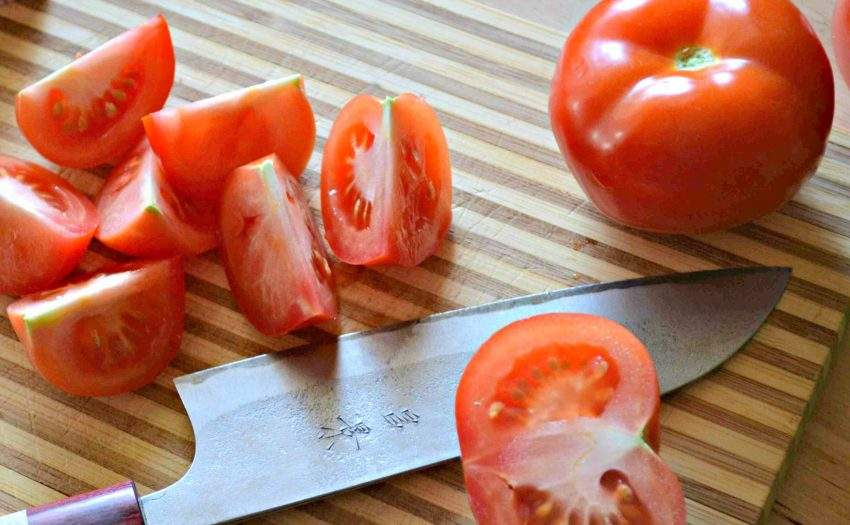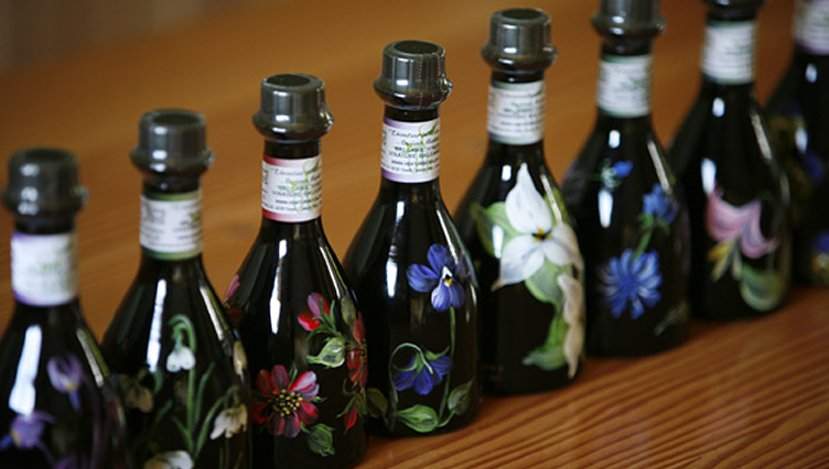Few cuisines are more deeply-rooted in traditions and more scrupulous about doing things the proper way than Italian cuisine. But in an age where eating locally is the mandate, how do you reconcile old traditions with local ingredients far from the old world? Instead of shopping from the international foods aisle or the deli at the supermarket for Italian ingredients, create an Italian meal with authentic methods and techniques and fresh artisanal Canadian ingredients.
Venturi-Schulze balsamic vinegar
Outside of Italy, this is probably the best vinegar you can buy. Out in Cobble Hill, on Vancouver Island, Giordano and Marilyn Venturi started Venturi-Schulze in 1988 from five acres of land. Since then, it has expanded into a 20-acre vineyard that offers a selection of red and white wine, balsamic vinegar and verjus.
Its balsamic vinegar is made with juices from the vineyard’s own herbicide-free and pesticide-free grapes using ancient methods, with French oak barrels before they are transferred to custom barrels made near Modena, and in five different varieties of wood: acacia, ash, cherry, oak and chestnut. The result is a sweet, yet well-balanced, bold and rich vinegar that is great on fruits, salads, even ice cream.
Tomatoes

This is a no-brainer. Tomatoes, specifically Roma or plum tomatoes, are used extensively in Italian cuisine. Luckily for us, farmers’ markets across Canada offer fresh tomatoes picked at the peak of their ripeness. In fact, known as the tomato capital of Canada, Leamington, Ontario is home to the H.J. Heinz Co. factory and is known for its high concentration of commercial greenhouses. Buy a bushel of tomatoes at the end of summer and make your own tomato sauce.
Montreal food blogger Mayssam Samaha has a good step-by-step tutorial.
Fresh cheeses
White Gold Burrata or mozzarella
Based out of Calgary, Alberta, White Gold Cheese Factory makes a variety of cheeses from 100 per cent Canadian non-modified cow's milk. Among the selection, the most notable products are its fior di latte (mozzarella) and burrata. Simply enjoy them with a few slices of ripe tomatoes, a drizzle of vinegar and oil and a sprinkling of freshly picked basil.
Bella Casara mascarpone
Let's get one thing straigh: it’s mascarpone, not marscapone. This soft cheese made with cream and citric or acetic acid is commonly used in desserts like tiramisu and is also used to thicken risotto. Quality Cheese Inc. from Vaughan, Ontario recently won the Canadian Cheese Awards for best fresh cheese with its Bella Casara mascarpone.
Pasta
Did you know that Canada produces some of the best durum wheat in the world and exports some of that to Italy? Crazy, right? Western Amber durum is grown in the (you guessed it) prairie provinces and B.C., but mostly in Saskatchewan, and the hard, high-protein wheat is used largely for semolina or pasta. In fact, Saskatchewan exports 37 per cent of the world’s durum wheat.
Pasta Famiglia, from Vancouver, B.C., makes artisanal pasta in small batches with Canadian semolina and water extruded from bronze die.
Lentils

Lentils are often used in Italian cooking, from soups and salads to hearty braised dishes. Before you reach for that dusty bag of confetti you get on the bottom shelf at the grocery store, seek out lentils from our prairie provinces. Better yet, try to get your hands on some blue (beluga) lentils at the Saskatoon Farmers’ Market. These tiny pearls are smaller, softer and they glisten compared to green lentils.
Pork
Pork is a huge part of Italian cuisine: pancetta, guanciale, prosciutto; the list goes on. And who makes some of the best pork in the world? That’s right: Canada! Specifically, Western Canada, where we export our products around the world, as far as Japan. Locate superior products like Broek Pork Acres in Alberta and Black Bow Farms in Ontario.
Camelina oil

Unfortunately, we do not have olive trees in Canada because it’s cold and snowy in most provinces for almost half the year. While we do not have the Mediterranean climate for olive oil, we do have camelina oil, an amazing oil that’s native to us from the prairies. This product, made by Three Farmers in Saskatoon, is nutty and green in flavour, light, chock full of health benefits (like vitamin E and essential fatty acids), and is a suitable substitute where you would normally use olive oil: bread dipping, salads and cooking.
Wine
We wouldn't dream of putting together an Italian meal without wine. So we asked wine writer Tom Firth for some advice on choosing a Canadian, Italian-style wine:
“Fans of Italian wine might have trouble finding a Canadian-made example in a similar style. Our climates just aren’t that similar to most parts of Italy, and we tend to favour more fruit-driven grapes in our plantings. One notable exception would be the wines of Okanagan’s Howard Soon, winemaker at Sandhill Estates and pioneer of its 'Small Lots' program. Soon produces very small amounts of barbera and sangiovese found in Piedmont and Tuscany, respectively, which are tasty and interesting, but taste quite different from Italian counterparts. The Okanagan tends to have hot summers, leading to more “dried” fruit character in both examples, but Soon does preserve the cherry, tobacco, and savoury tomato-like qualities of sangiovese and the sour cherry fruits of barbera. Not being held to the often stringent rules of Italian winemaking, these wines are different expressions than their Italian cousins.”













